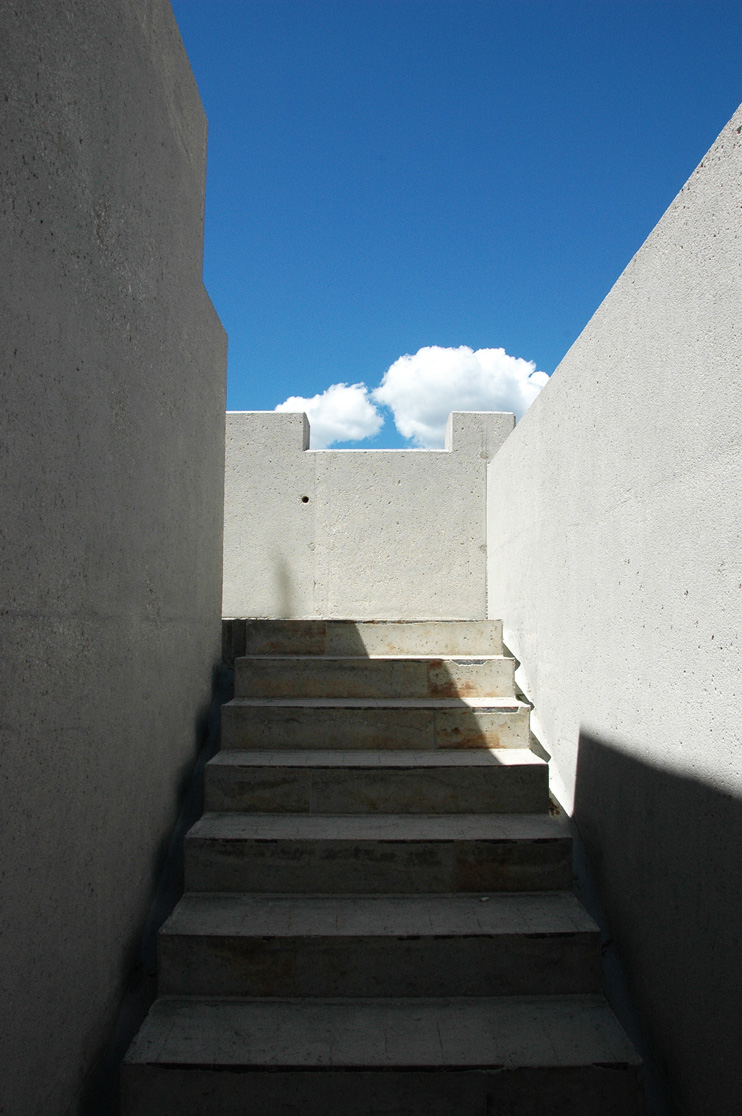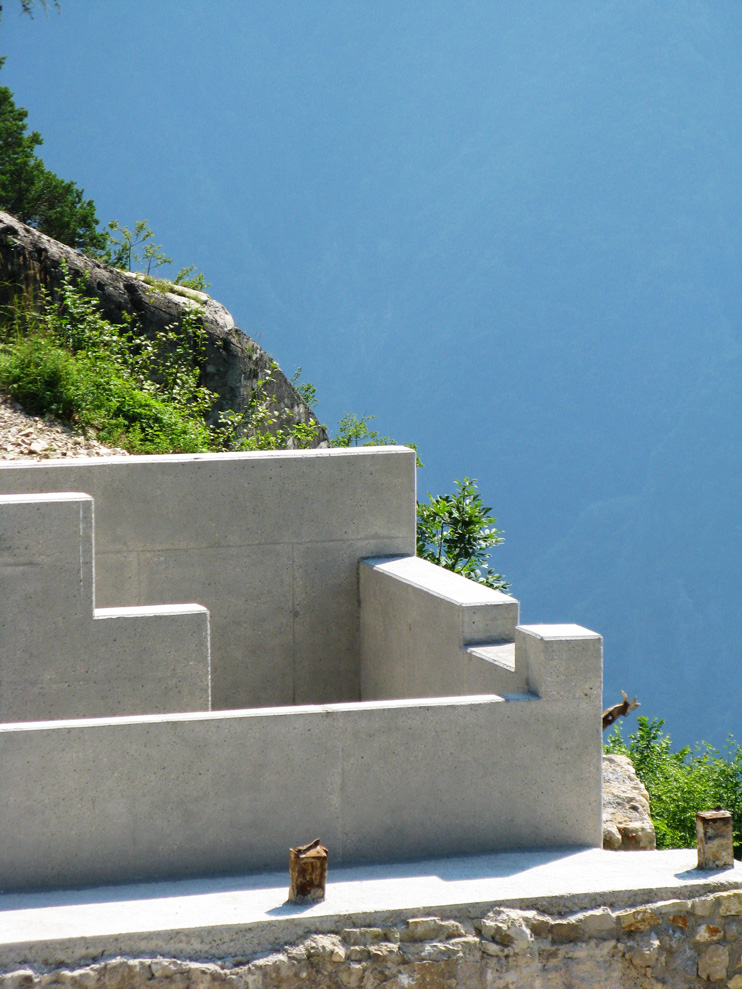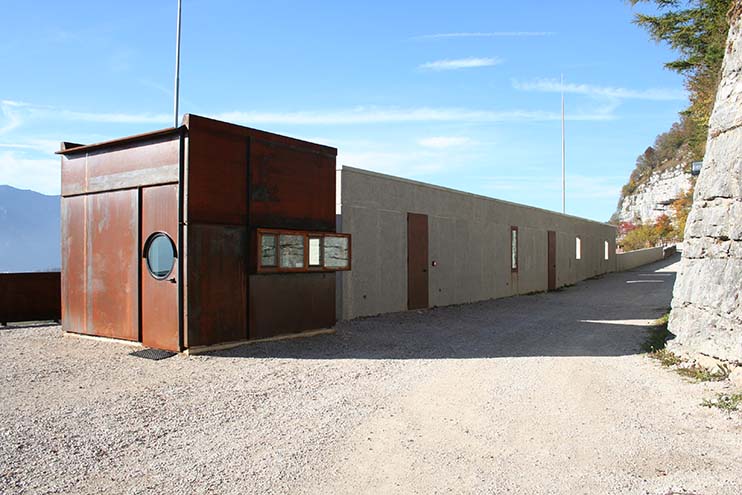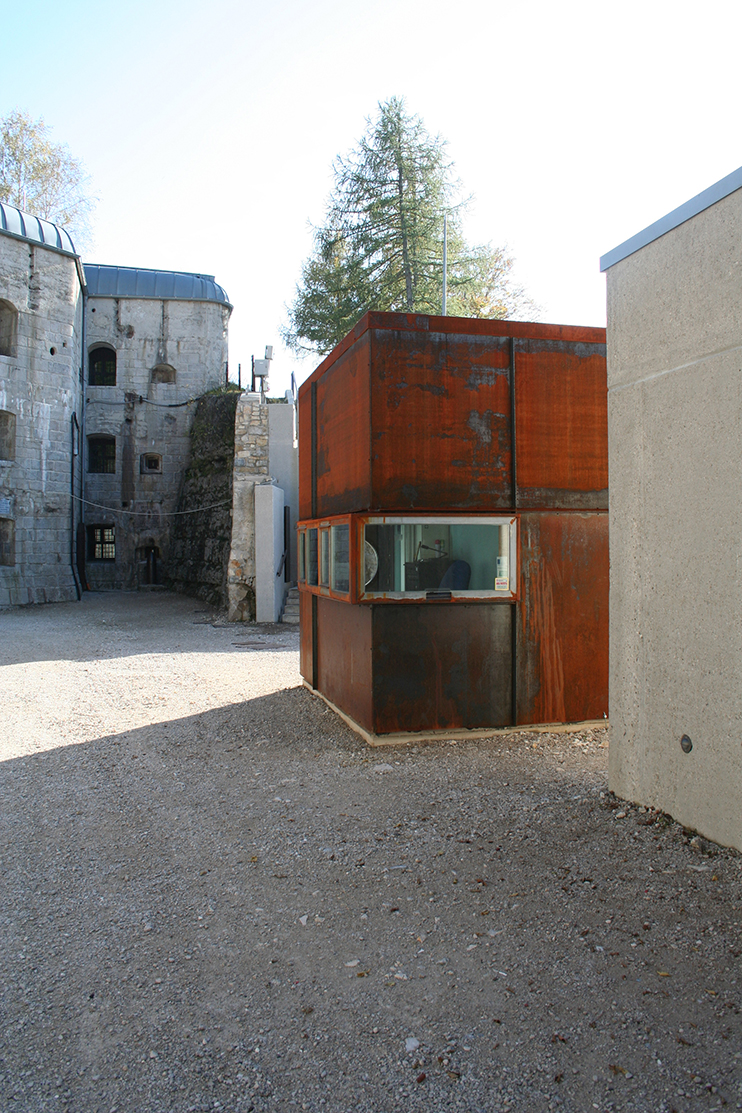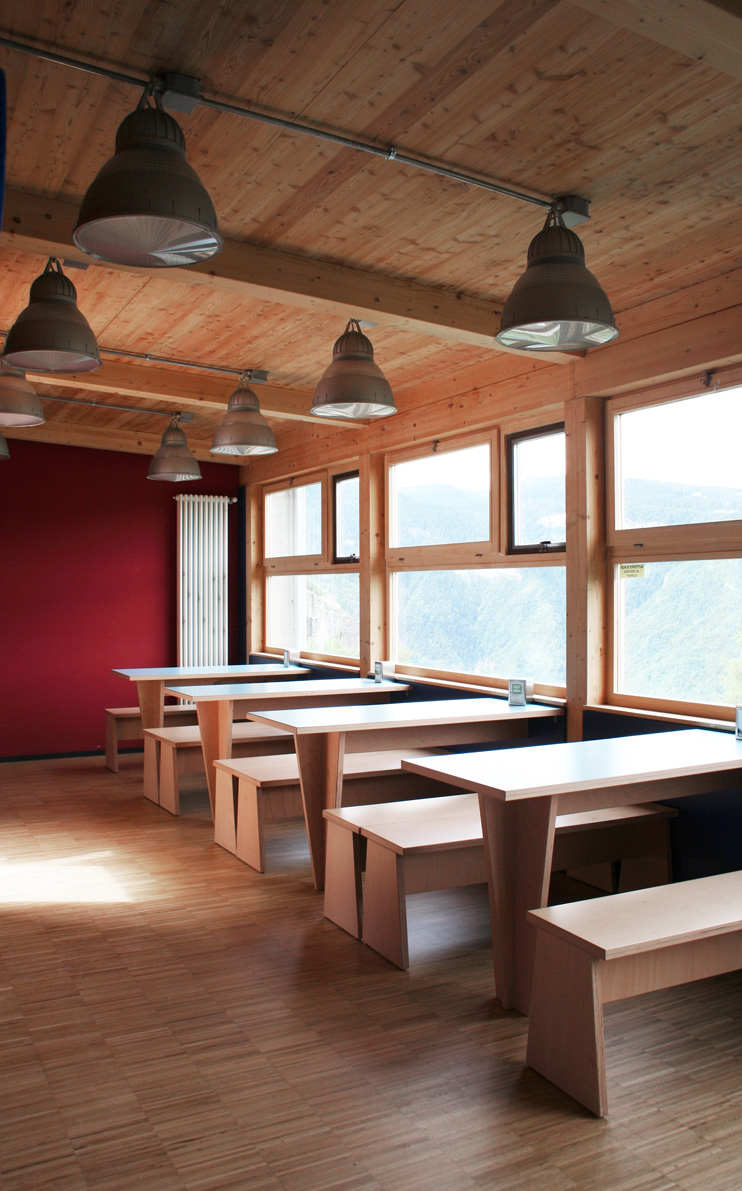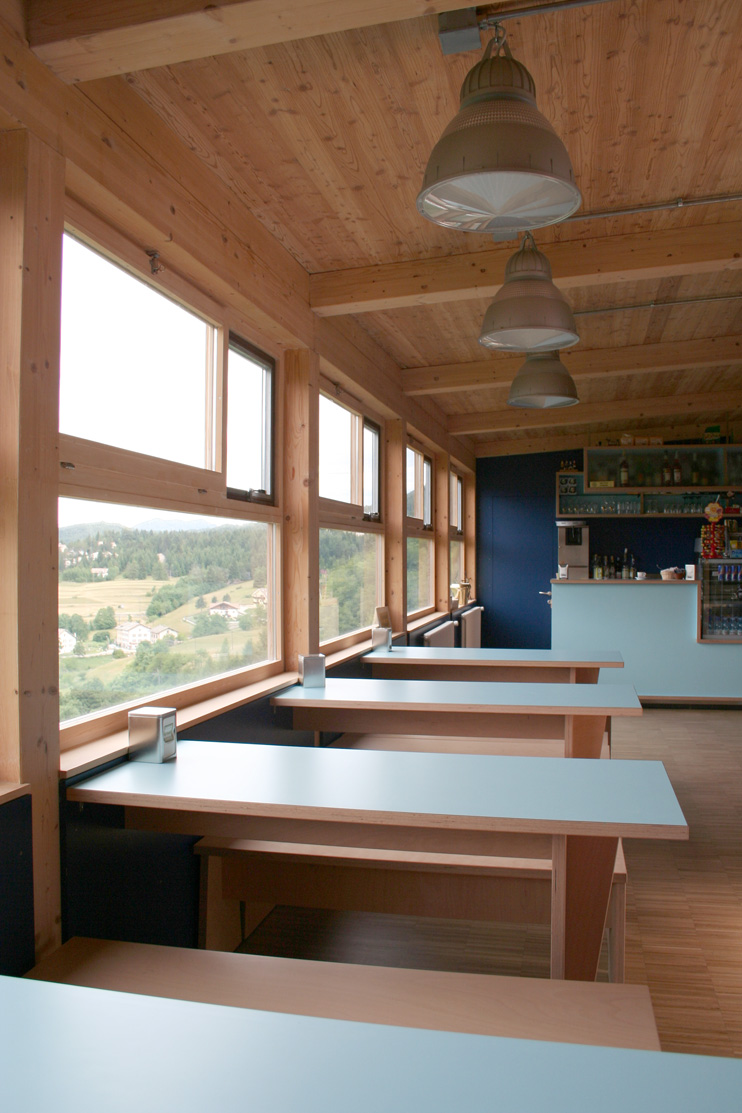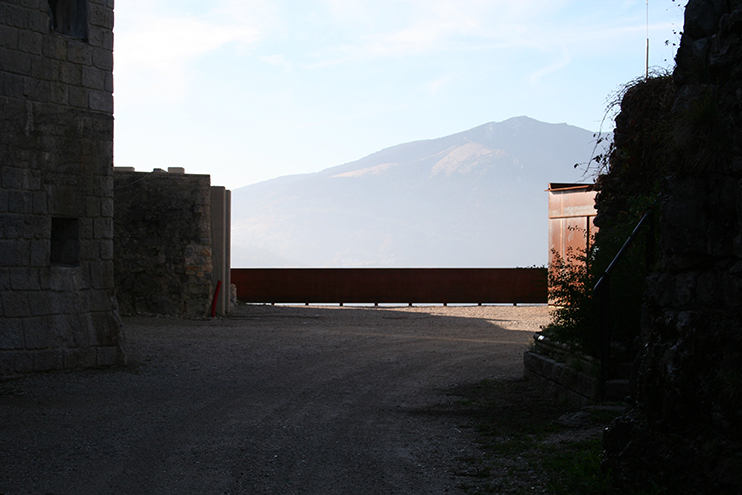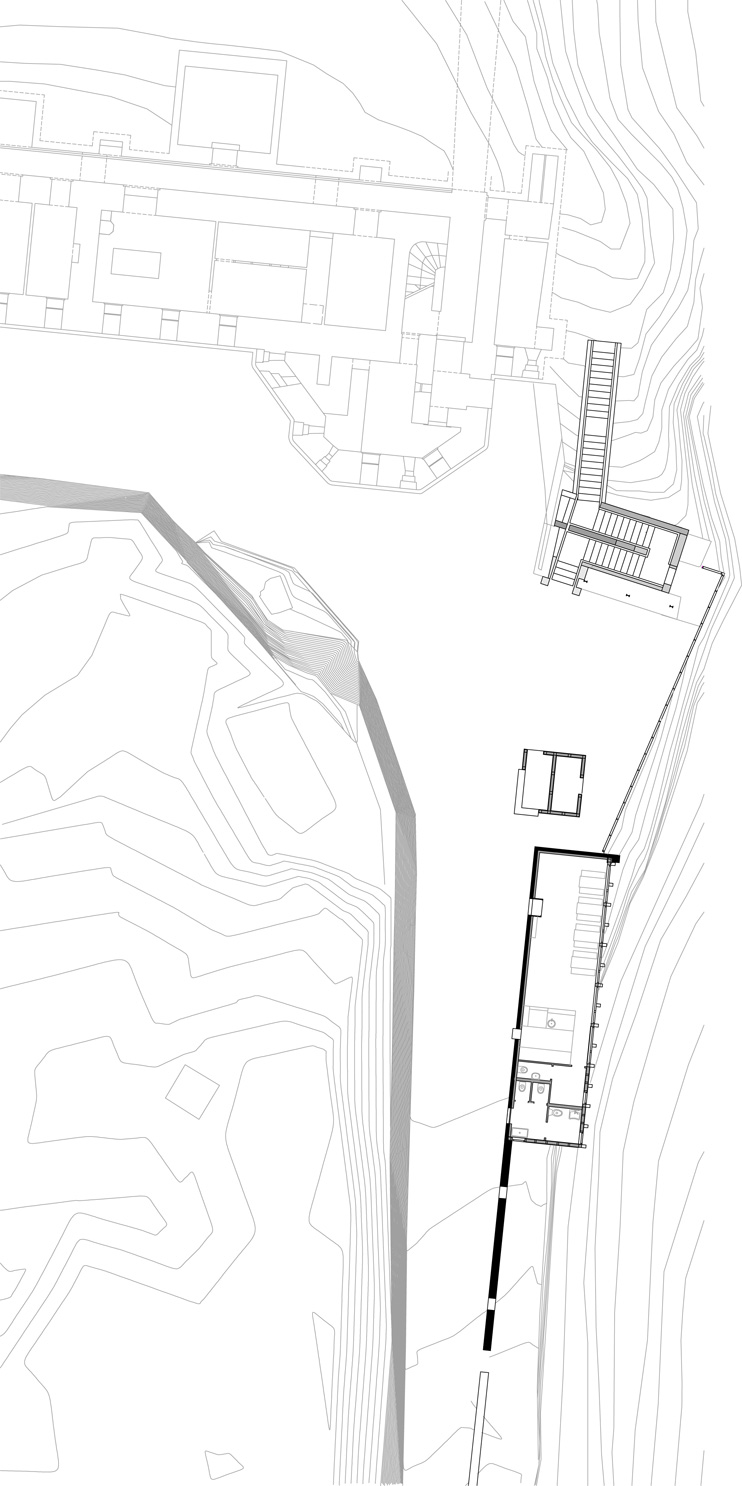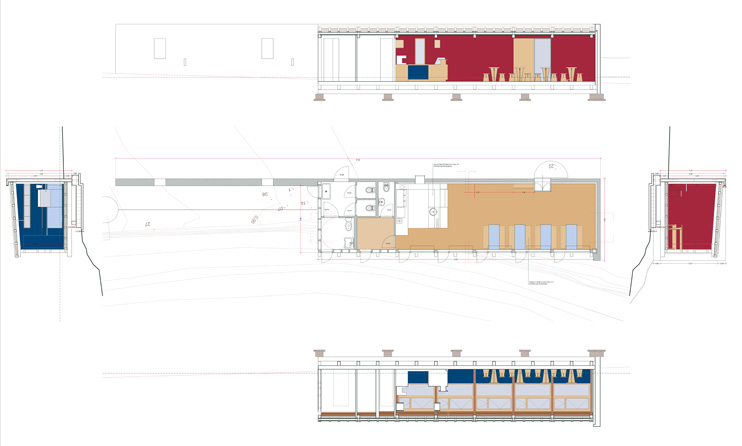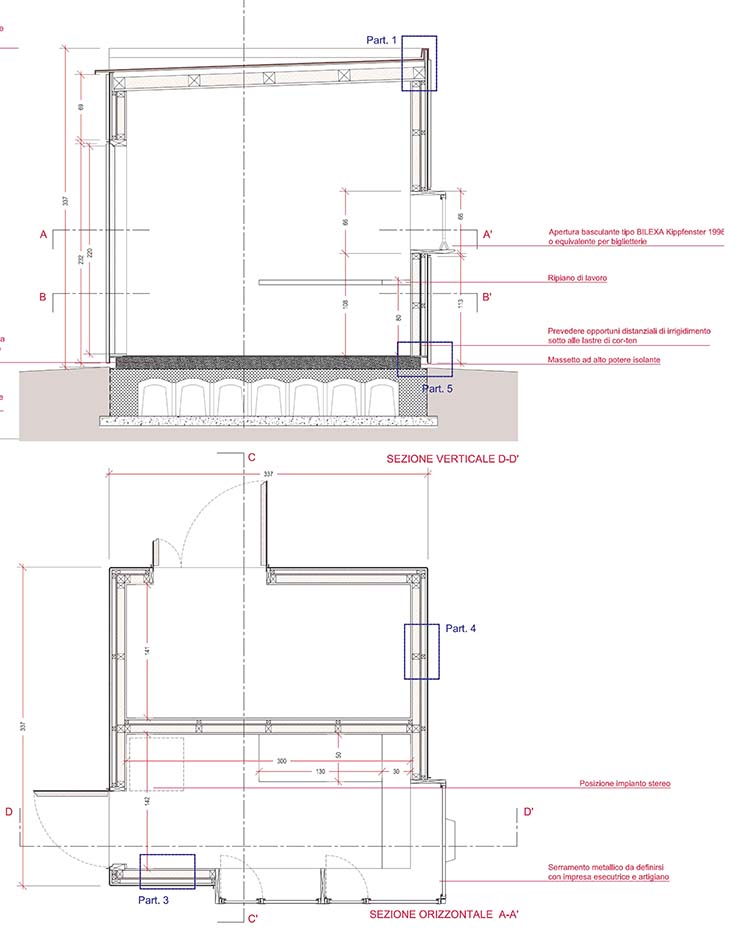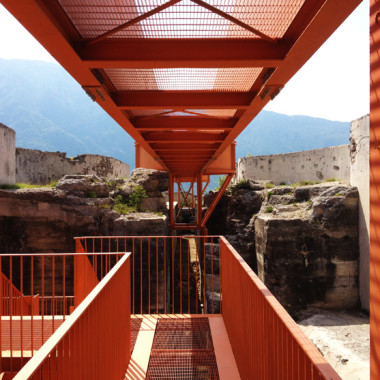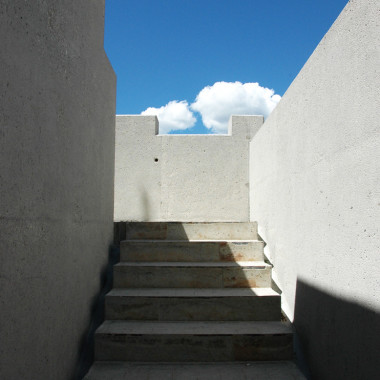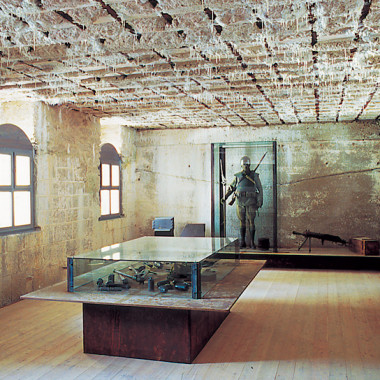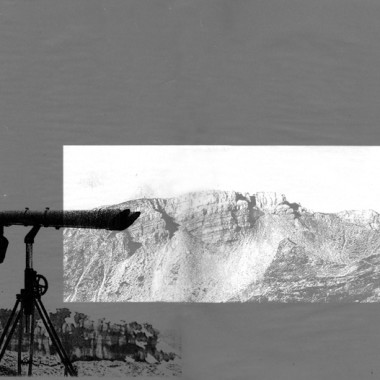-
Cafe bookshop del museo della grande guerra nel forte belvedere / Werk Gshwent, Lavarone, Trento
F.Collotti con M.Boasso e V.Fantin
Lavarone, Trento 2000-2009A Forte Belvedere/Werk Gschwent si arriva ancora oggi lungo una cengia naturale allargata dal Genio militare austroungarico quanto basta per far passare i trattori di artiglieria che qui han portato gli obici e le cupole Skoda subito prima dello scoppio della prima guerra mondiale. La sistemazione degli accessi alla fortezza comprende in sequenza pochi elementi allineati con l’antico manufatto, disposti a risignificare il luogo rendendone possibile l’uso attuale: un muro, un cubo, una scala. Il muro, dalla pianta a L, giace sul luogo del vecchio terrapieno per la fucileria. Cemento faccia piuttosto rude, riprende quote e bucature del basamento del forte: protegge e ospita il volume in larice di bar e bookshop, sospesi sulla valle. La biglietteria è un cubo di ferro: annuncia l’ingresso al paesaggio fortificato, ma anche l’avvenuto ritorno al Forte dell’acciaio che fu nel Ventennio da questo luogo sottratto per fondere i cannoni per un’altra guerra, la Seconda.
La rampa alle cupole corazzate – infine – si snoda sul pendio ostendendo i vecchi lacerti delle muraglie bombardate: in alcuni punti sguardi sul paesaggio, oggi rappacificato.
Anche per questa via, nell’ambito di un più ampio mandato volto al recupero della memoria della Grande Guerra sul saliente trentino, abbiamo lavorato ad una singolare alta manutenzione dei luoghi perseguita attraverso una rivisitazione dei campi di battaglia mediante il progetto di architettura. -
Cafe bookshop of the WW1 Museum in Forte Belvedere / Werk Gshwent, Lavarone, Trento
F.Collotti with M.Boasso and V.Fantin
Lavarone, Trento 2000-2009Even today you can only arrive in Forte Belvedere/Werk Gschwent along a rocky ledge widened by the Austrian-Hungarians just enough to let through the artillery trucks which brought the cannons and the Skoda domes just before the outbreak of the First World War. The redevelpoment of the access to the fort consists in a few elements aligned to the ancient structure, to renew the structure making possible its actual use; a wall,a cube, a staircase. The wall , from the L plan, lies on the grounds of the old embankment for the riflemen. A rather rough, cement wall which now hosts the cafè and bookshop, suspended above the valley. The ticket office is an iron cube, which stands at the entrance to the fort and which recalls the return to this place of the iron which was mined here to make other cannons for the Second World War. The ramp to the armoured domes winds up the slope, vaunting the old muscles of the bombarded walls: in some places it looks over the landscape, which today is peaceful again. Our mandate devoted to the reclamation of the memory of the Great War, has brought us to work on a high maintenance of the places involved leading to a kind of rivisitation of the battlefields through this architectural project.


